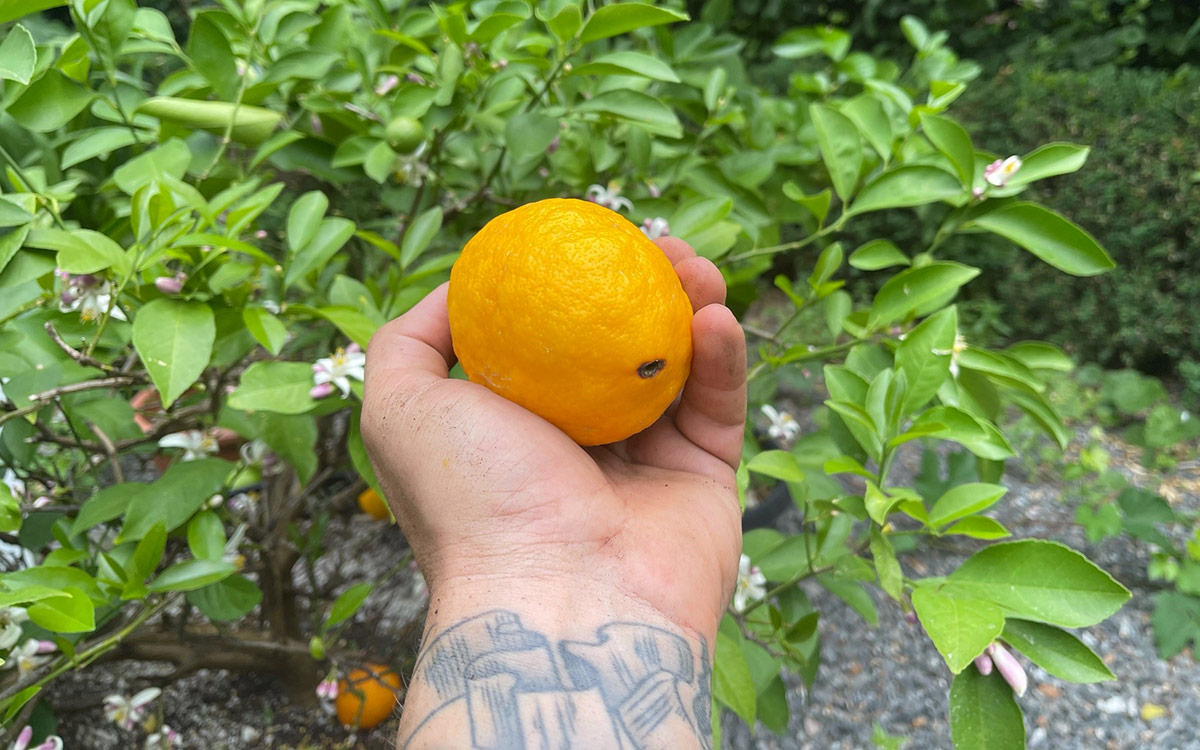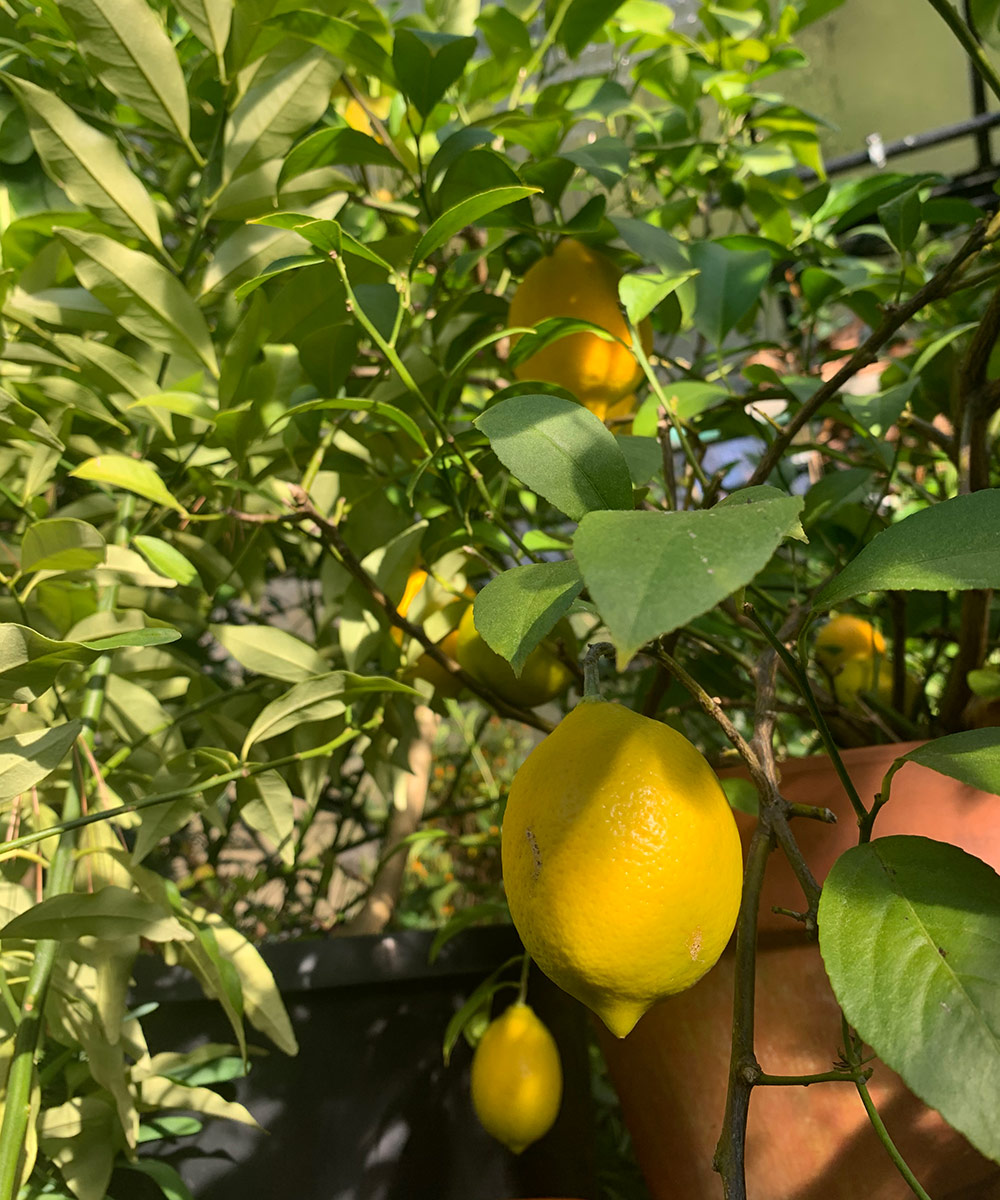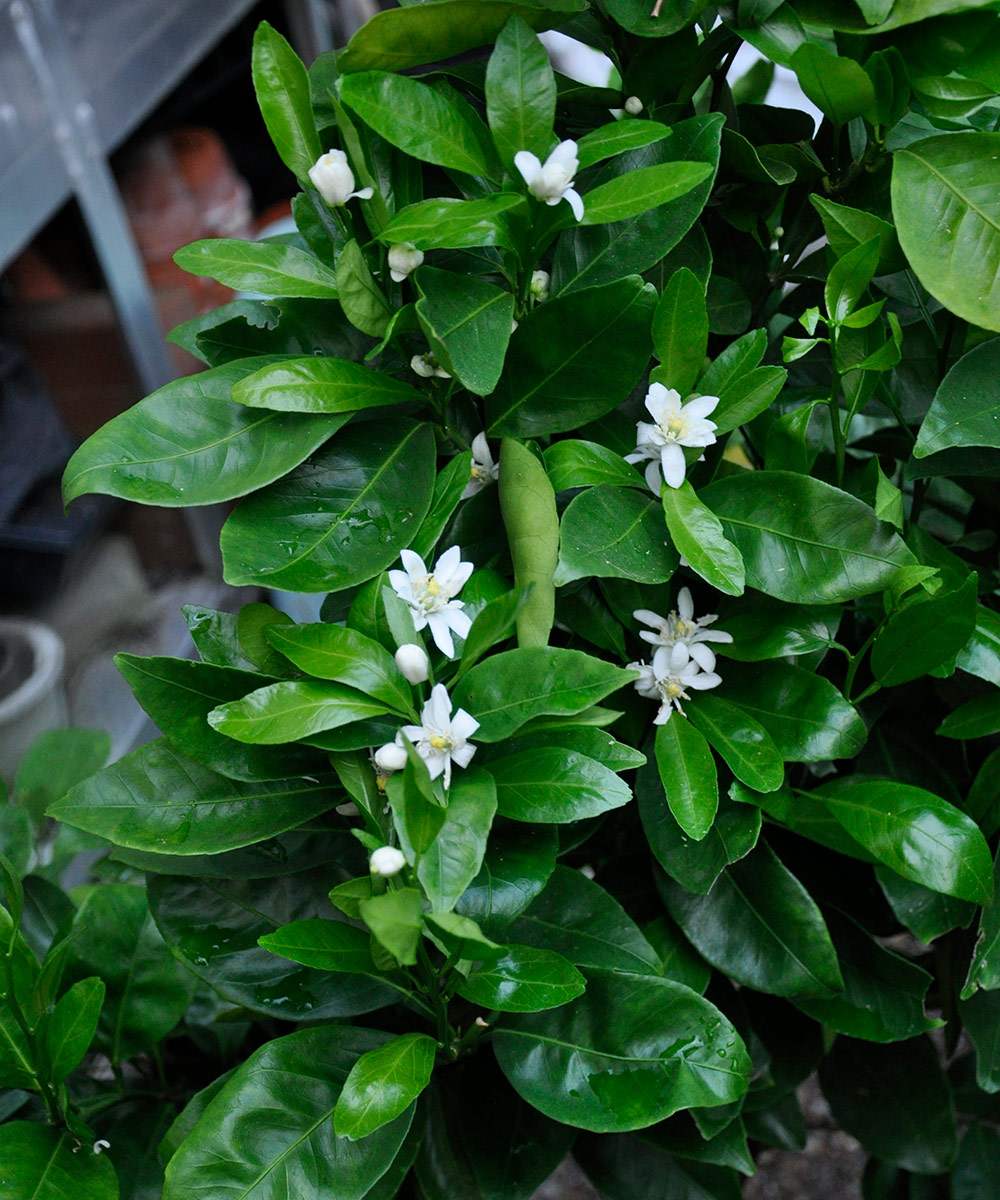
Keeping citrus trees indoors is a dream for many gardeners who live in cold climates like the Northeast, especially through long, dark, and snowy winters. Many gardeners face the agonizing decision either to allow a precious and often expensive citrus tree that they found at a garden center in spring to freeze or to bring it inside for winter. This article will go over everything you need to know to grow citrus outdoors during summer and indoors during winter, and it offers tips on pest management, pollination, fertilization, and repotting.
The history of growing citrus indoors
Growing indoor citrus in the Northeast isn’t a new concept. In the nineteenth century, many gardening books promoted citrus as houseplants, but we mustn’t forget that those fireplace or steam-pipe radiator-heated Victorian parlors provided ideal conditions. Many parlor plants that thrived then would perish today, including camellias (Camellia spp. and cvs., Zones 6–10), flowering maples (Abutilon spp. and cvs., Zones 8–11), and yes, citrus. It all comes down to relative humidity and keeping temperatures cool enough to reduce pests and stimulate flowers. Those giant Victorian windows helped too.
Where to put overwintering plants indoors
Sunny, cool, and humid conditions, which are perfect for growing citrus indoors, are rare in our homes today. So unless you live in an older home with steam radiators that you can turn on and off or you have some unheated spare rooms, you may need to be a bit more creative when looking for that perfect spot for your citrus tree.
Unheated rooms might be rare in modern homes, but many folks today have an unheated cellar, a cool mudroom, or a garage that doesn’t freeze. If it’s dark and cold, there should be little new growth until late winter, so a nearby window will be enough. The ideal winter temperature range for citrus is somewhere between 40°F and 55°F, with a slight drop at night. Find that, and you’ll be rolling in fruit. If temperatures are slightly warmer (over 55°F), then add an LED lighting unit with full-spectrum bulbs with a timer set from 14 to 16 hours. In these conditions the plant may survive, but you are more likely to get pests and unseasonable new growth.
Pests that citrus plants may face indoors
Citrus kept indoors are prone to pests, and the warmer and drier the air, the more risk pests pose. Avoid this by keeping plants in as cool a location as possible and providing as much humidity as you can. A weekly shower is helpful. (Set pots in the shower and provide a deep room-temperature soak.) This will wash off the leaves and keep them healthy. If you see leaves yellowing and dropping indoors, this could be a sign that the atmosphere is too dry.
Citrus are prone to the big trio of indoor plant pests: mealy bugs, spider mites, and the dreaded scale. Aphids are also a problem, but usually only when plants are beginning new growth, as aphids prefer young, tender leaves and flower buds. Try an insecticidal soap or neem oil for these pests. But often the best treatment comes naturally once plants go out for the summer. Scale is perhaps the most difficult pest to eliminate organically if the infestation is bad. If caught early, a cotton swab dipped in rubbing alcohol may be useful in scraping off each scale insect. More often than not, a plant with a big infestation of mealy bugs, spider mites, or scale may need to be tossed.
When to move citrus indoors for winter
In autumn, move citrus trees indoors once a hard freeze threatens (most citrus can handle a light frost, except limes). In the Northeast, this can be anytime between late September until mid-October, depending on your zone.

When to bring your citrus outdoors for summer
In spring, plants that have survived a winter indoors will be relieved to go outside as soon as the temperatures are consistently above freezing, which in the Northeast could be as early as mid-April. A trick some growers practice is setting citrus outdoors to get a slight nip of frost, which will usually kill most indoor pests. This is only safe if your plant has not yet started to set flower buds or any new growth. You can always set plants out on sunny, cool days in March if temperatures are above freezing, but bring them back indoors if a freeze threatens. Dormant, mature foliage can usually handle a light freeze, but the roots cannot. The safest bet is to haul plants out once the local forest trees have begun to break their dormancy and once maples (Acer spp. and cvs., Zones 3–9) begin to bloom. Set plants out of direct sun for a few weeks, and gradually introduce them to more sun. During summer, full sun to partial shade is preferred.

The best citrus varieties for overwintering indoors
Variety and species matter when it comes to indoor success with citrus. Luckily, the most common citrus tree available today, the ‘Improved Meyer’ lemon, is the best for winter culture indoors. I’d like to add any kumquat to the list as well. Any of the large citrons (like ‘Ponderosa Lemon’ and the curiously shaped ‘Buddha’s Hand’) also do well indoors, but many might consider these larger, thorny plants unwieldy and awkward. Moreover, the fruit, while novel, is inedible unless cooked.
Calamondin oranges are also a good bet. They make attractive specimen plants, and not only are they often covered in sour fruits and fragrant flowers, but their foliage can be attractive as well. Another useful indoor citrus tree is the kaffir lime, whose foliage is often used in cooking.
It’s best to avoid heat-loving citrus like grapefruits, Persian limes, and oranges like ‘Valencia’ or blood oranges. These often drop their fruit indoors, or sulk with cooler temperatures.

How to pollinate citrus flowers
When fragrant blossoms appear in late winter or spring, they will benefit with a little pollination help even though these trees are considered to be self-pollinating. Without wind or bees, you might end up with poor fruit set. In the Northeast, it’s OK to set blooming plants outside for a few hours on mild winter days. Foraging bees or honeybees may find the flowers, or the wind will help move branches around, releasing pollen. If the weather is still fierce, you can tap the stems firmly to help distribute the sticky pollen, or hand-pollinate with a cotton swab.
Fertilizing citrus plants
Fertilize plants in spring and summer when they are actively growing outdoors. Use a balanced organic fertilizer (5-5-5). Occasionally an iron or zinc deficiency might cause yellowing leaves, but the easiest way to overcome this is to use a fertilizer specifically for citrus.
Repotting citrus plants
While most citrus prefer to be grown in a smaller rather than a larger container, it can often be difficult to judge when the best time to repot a citrus tree is, especially since citrus form many surface roots that will become exposed. I top-dress all citrus trees with an inch or so of fresh potting compost every spring if roots are exposed, but I repot less frequently, especially with mature plants. Younger plants will grow more rapidly, however, and may need repotting annually for the first two or three years. Once mature and growing in a 12-inch or 14-inch pot, most plants will benefit from just a simple refreshing of the old soil. You can remove a plant from its pot when the soil is dry, shake off excess medium, and replace it with fresh soil, repotting the plant into the same pot.

Always pick the fruit before spring
Citrus that is grown indoors for winter and outdoors for summer usually will bloom in spring and summer, with fruit developing in fall or winter. Picking the fruit is key if you want a second crop the following year. I learned this the hard way, wanting to enjoy oranges and lemons all summer long on our many plants. Fruit that isn’t harvested will cause plants to produce fewer flowers and fruit the following year. Now at the end of winter I harvest every lemon or kumquat off the branches—a great excuse to make marmalade.
Follow these tips to help your citrus trees thrive all year round in the Northeast or other climate with cold winters. If you provide the right care and conditions, your tree should thrive and set fruit for years to come.
For more Northeast regional reports, click here.
—Matt Mattus is the author of two books: Mastering the Art of Flower Gardening and Mastering the Art of Vegetable Gardening. He gardens in Worcester, Massachusetts.
Photos: Matt Mattus


















Comments
Log in or create an account to post a comment.
Sign up Log in